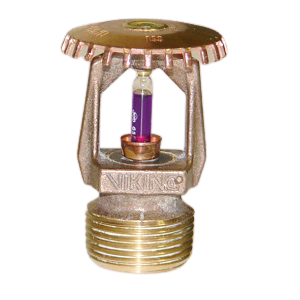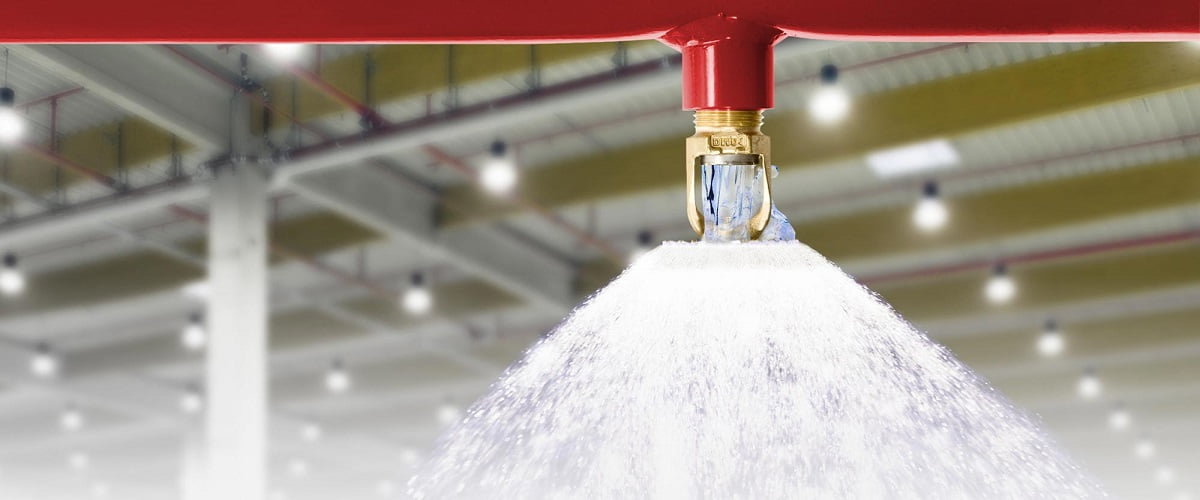
Fire Sprinkler Systems have strategically placed sprinkler heads with glass bulbs containing a glycerin-based liquid. Sprinkler systems detect a fire through rising temperatures. As the temperature at the sprinkler head rises to between 57 to 260 centigrade degrees the liquid inside the glass bulb expands and breaks the glass, thus activating the sprinkler head. There are various colors of liquid in these glass components, each indicating a different threshold of heat required to break the glass.

There are four kinds of Sprinklers: Wet Pipe Sprinkler, Dry Pipe Sprinkler, Deluge Sprinkler and Pre-action Sprinkle.
Wet Pipe Sprinkler |
|
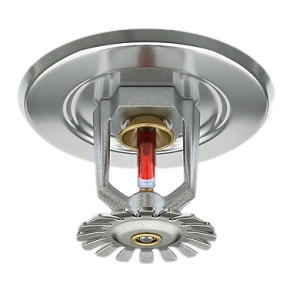 |
A Wet Pipe System works when the glass bulb inside of a fire sprinkler is heated to a specific temperature. This temperature can range depending on the fire sprinkler, but on average it is 68°C (155°F). The glass bulb is filled with a glycerin-based liquid that expands when heated. Once the liquid expands the glass bulb shatters. This breaks the plug and allows cold pressurized water to start flowing from the fire sprinkler pipe through the fire sprinkler head. Despite what the movies show, only the fire sprinklers subject to the proper heating will discharge water. |
Dry Pipe Sprinkler |
|
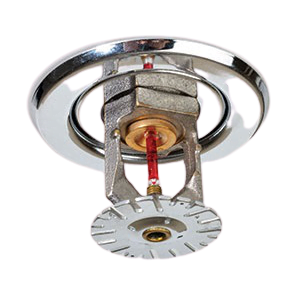 |
Dry Pipe Fire Sprinkler Systems are a bit more complicated than a Wet Pipe System. A Dry Pipe System consist of pipes that contain pressurized air instead of water. Then there is a check valve that holds the water supply back from the pipes. A fire sprinkler head is then triggered when it is heated to temperature. This vents the air from the fire sprinkler head through the fire sprinkler pipe. The air pressure within the pipes then drops which opens the check valve and allows water to flow through the pipe to the vented fire sprinkler head. Because each sprinkler head operates individually, water will only flow out of a sprinkler head if it has been heated to the temperature that allows it to vent. |
Deluge Sprinkler |
|
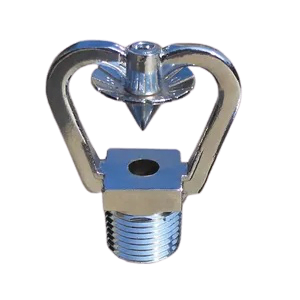 |
Deluge Fire Sprinkler Systems involve dry pipe and open fire sprinklers. This means that there is not water present in the fire sprinkler pipes. There also are not any heat sensing activators in the fire sprinklers. Instead, the Fire Sprinkler System is connected to the Fire Alarm System. When the Fire Alarm System is triggered then the fire panel sends a signal to open up the deluge valve. The Fire Alarm System could be triggered from pilot sprinklers, smoke detectors, heat detectors, optical flame detectors, etc. This sends water flowing from the valve, through the pipes, and out all of the fire sprinkler heads. |
Pre-action Sprinkler |
|
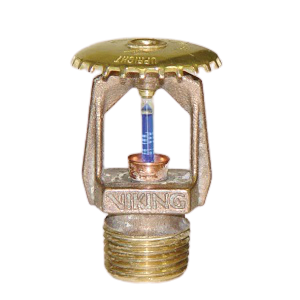
|
Pre-Action Systems are a combination of wet, dry, and deluge systems. Their exact make up can often depend on the goal of the system. Within a Pre-Action System there are three subtypes: single interlock, double interlock, and non-interlock.
Single Interlock system is very similar to a dry system. The operation of this system requires a fire detection event to take place before water enters the system. Usually a heat or smoke detector are one of the devices that activate the system. Once the system activates a mechanically latched valve is opens to allow water to flow through the system and out of the fire sprinkler heads. The goal of the Pre-Action Fire Sprinkler System is to reduce the time delay of the water being delivered to the fire sprinkler system. Double Interlock system is similar to a deluge system. The main difference is that automatic fire sprinklers are used. The operation of this system requires two fire detection events to take place before water flows through the system. This means that both a heat or smoke detector and at least one fire sprinkler needs to be activated before water will flow. If only one of the fire detection events occur, then water will not flow into the system. Non-Interlock system uses the same ideas as both the single interlock and double interlock systems. But, the operation of this system requires either the activation of detection devices or automatic fire sprinklers. This means that a non-interlock system activates by either a heat detector, smoke detectors, or the activation of automatic fire sprinklers. Once one of these devices activate then the valve is opens for water to flow through the system. |
Our Products
Our Services

